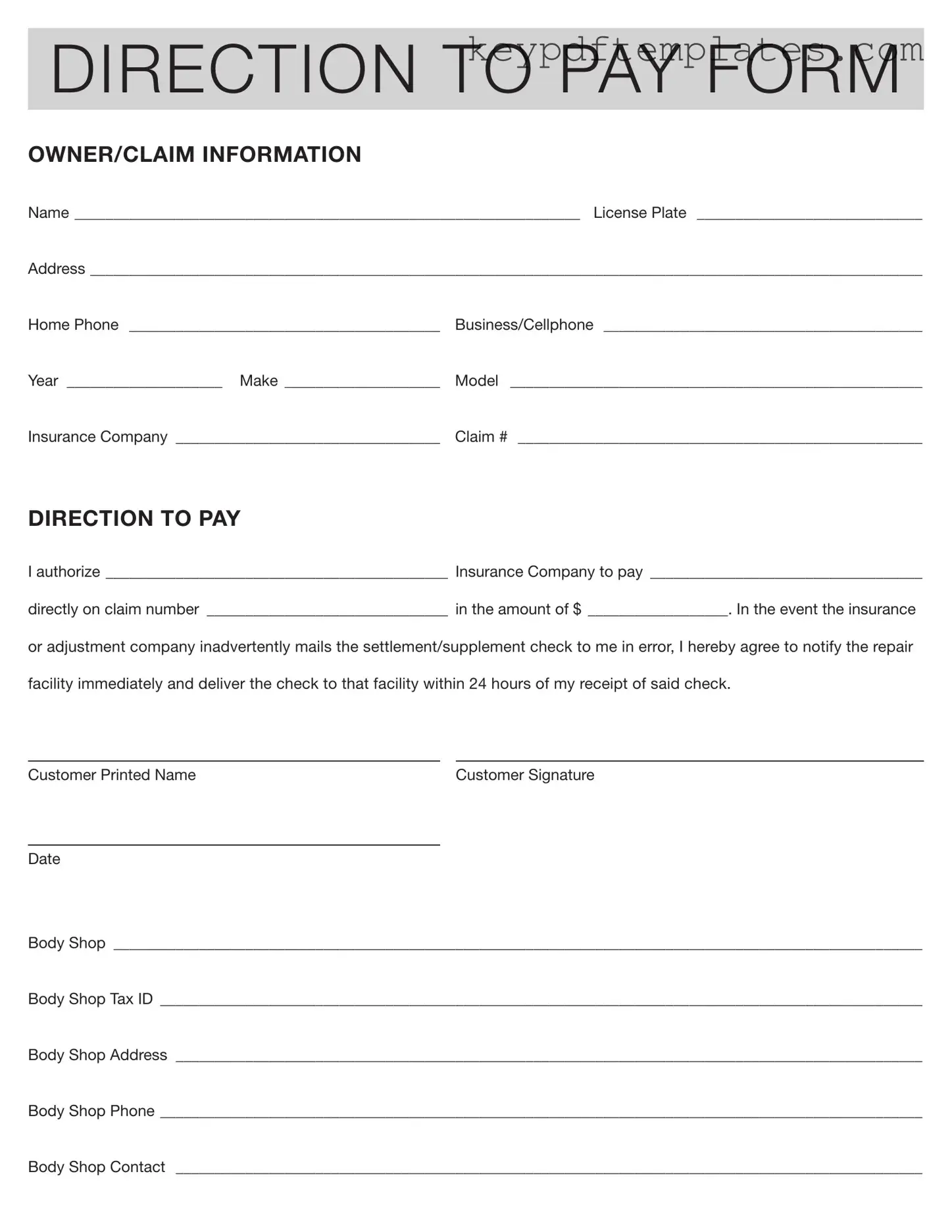Get Authorization And Direction Pay Form
The Authorization And Direction Pay form is a crucial document that allows a policyholder to direct their insurance company to make payments directly to a repair facility for services rendered. This form streamlines the claims process, ensuring that funds are allocated efficiently and promptly. By completing this form, you can facilitate a smoother transaction between your insurance provider and the body shop handling your vehicle repairs.
Modify Document Online
